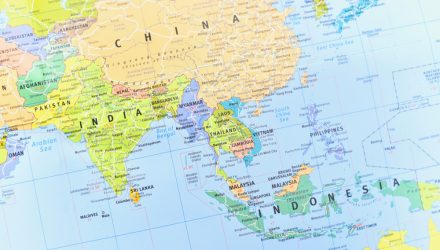According to a Reuters report, investors are looking at Southeast Asia as a prime investing opportunity as the taste for global equities sours.
A rise in commodities prices is helping to fuel this interest. Additionally, Southeast Asia’s links to the Russian-Ukrainian conflict are almost non-existent, giving investors a safe haven amid the geopolitical tensions.
There have been supply disruptions due to sanctions against Russia by Western allies. This is causing commodities such as Brent crude, palm oil, coal, and nickel to soar, according to the Reuters report.
“Commodity prices are now likely to be higher for longer,” said Jerry Goh, an Asian equities investment manager at fund house abrdn. “We expect Malaysia and Indonesia to continue enjoying trade surpluses, which should bolster government revenues and encourage consumer spending.”
Southeast Asia Exposure in 1 ETF
As opposed to holding equities across various countries in Southeast Asia, investors can get that level of exposure via one fund. Enter the Global X FTSE Southeast Asia ETF (ASEA), which has an expense ratio of 65 basis points.
ASEA seeks to provide investment results that correspond generally to the price and yield performance of the FTSE/ASEAN 40 Index. The underlying index tracks the equity performance of the 40 largest and most liquid companies in the five Association of Southeast Asian Nations (“ASEAN”) regions: Singapore, Malaysia, Indonesia, Thailand, and the Philippines.
The rise in commodities, as mentioned by the Reuters report, is focused in Indonesia and Malaysia. ASEA effectively gives exposure to this pair of countries as a way to play the inflation in commodities.
ASEA fund highlights:
- Efficient access: Efficient access to a broad basket of Southeast Asian securities.
- Targeted exposure: The fund targets exposure to a specific region.
For more news, information, and strategy, visit the Thematic Investing Channel.


